
Looking for ways to help the Ukrainian people? The consensus is that cash donations made to organizations working on the ground is the best way to help.
This is by no means an exhaustive list, and Tysons Interfaith cannot endorse any particular group, but the following links may be of assistance as you consider your options:
- The US Agency for International Development (USAID) provides a list of organizations responding in Ukraine: https://www.cidi.org/disaster-responses/ukraine-crisis/
- This NPR piece highlights a few organizations providing assistance: https://www.npr.org/2022/02/25/1082992947/ukraine-support-help
- The US State Department has partnered with GoFundMe to raise funds to address the humanitarian needs of the people affected by the Russian aggression against Ukraine. All donations raised will be distributed to verified nonprofit organizations supporting vulnerable communities to obtain access to shelter, food, medical services, education, and psychosocial support, as well as other people impacted https://www.gofundme.com/f/ukraine-humanitarian-fund
- St Andrew Ukranian Orthodox Cathedral in DC is collecting medical supplies and other items through an Amazon wishlist that they are distributing to people on the ground in Ukraine. MOST IMPORTANT THINGS NEEDED: Medical Supply (bandaids, Neosporin, ibuprofen, etc). NO LIQUIDS, NO BATTERIES, NO CLOTHING, NO MILITARY COMBAT EQUIPMENT, NO DIAPERS. Order on amazon and/or deliver to: 15100 New Hampshire Ave. Silver Spring, MD 20905 Wishlist: https://www.amazon.com/hz/wishlist/ls/2ADMR0OG6MBVX?ref=cm_sw_sm_r_un_un_m4ZOH13VxHHyO
- World Central Kitchen, founded by Chef José Andrés, is responding: https://wck.org/
- Lutheran World Relief is working in Eastern Europe: https://donate.lwr.org/give/393187
- Episcopal Relief and Development has established a Ukraine Crisis Response, Fund, working with organizations on the ground in Europe: https://support.episcopalrelief.org/ukraineresponse

Finally, people of good will of different faith traditions are joining together to call for peace in the region. An example of this united voice can be found here: https://elca.org/News-and-Events/8131

Its origins date back to 1925, but since 1976 every President of the United States has proclaimed February to be Black History Month in acknowledgment of the often-underappreciated contributions African Americans have made to our country. (Black History Month) The resources available to explore this rich history – on various online and streaming services, in libraries, and in schools — have never been better, but the need to explore and understand them is just as urgent.
As the Rev. Canon Leonard L. Hamlin, Sr., Canon Missioner and Minister of Equity and Inclusion at the Washington National Cathedral puts it:
“Yes, Black History Month is about the past, but it must also be about our present, as well as the future we hope to forge, together, as Americans.” He notes that one theme chosen for 2022, that of Black Health and Wellness, is “a way to celebrate all the ways African Americans have touched our bodies and souls, whether as essential workers, front-line health providers or in small ways to promote wellness.” And he urges us to consider the “racial and economic disparities of the COVID-19 pandemic” and to “follow the guidance of those who, throughout history, have challenged us to imagine something different, something better.” https://cathedral.org/press-room/black-history-month-is-about-so-much-more-than-our-history/
Many of those leaders have been inspired by their faith traditions, as should we.
Fairfax County has also prepared a number of opportunities for residents to get involved in Black History Month, focusing on collecting stories from current and former residents and providing resources to students to engage in project-based learning activities and the county’s historical marker program.
The Fairfax County Black History Month Program will be streamed live on Friday, February 11th from 7pm-8pm on Channel 16.
The link to the live stream is: https://www.fairfaxcounty.gov/cableconsumer/channel-16/stream.
This year’s theme is:
The Black/African American Experience Project. This is a joint effort among Fairfax County’s Board of Supervisors, Fairfax County Public Schools (FCPS), History Commission, and Neighborhood and Community Services. There are three parts of this effort: collecting stories, project-based learning, and historical markers.
The Historical Marker Project: will initially focus on the Black/African American experience and all students from K-12 (public, private, homeschooled etc.), classrooms and community youth groups can submit ideas for new Historical Markers throughout Fairfax County. The Historical Markers can commemorate an event, person, or location of historical significance within the county. Submissions are being accepted from February 1, 2022, through March 31, 2022. Students can learn more about the project, submission guidelines, and access links to resources at www.fairfaxcounty.gov/topics/historical-marker-project.
Project- Based Learning: As part of project-based learning, FCPS will provide resources to support students in researching untold local stories of Black/African Americans and groups who have impacted our community. FCPS has also provided resources that have been published at https://www.fcps.edu/news/fcps-launches-historical-marker-project-highlight-untold-stories-countys-african-american for equitable access to students who are not enrolled in FCPS schools.
Collecting Stories: As part of the effort to increase the visibility of Black/African American experiences in the county, Neighborhood and Community Services is asking current and former county residents to share their stories. We are collecting stories about your family, community, church (faith community), cultural, educational, justice, innovation, or housing experiences. There are two ways that stories are being collected. You can complete the African American Experiences submission form on their website: www.fairfaxcounty.gov/topics/black-african-american-stories or you can share your oral history on video by making an appointment with their computer clubhouse technicians to have your stories recorded. Those interested can email collectingstories@fairfaxcounty.gov to set up an appointment. These stories will support the project-based learning at Fairfax County Public Schools, help build a racial history timeline and increase the visibility of Black/African American contributions to the county.
Finally, here is a link to discover twenty ways to celebrate and experience Black History Month in the DC Metro area:
https://www.fxva.com/blog/post/african-american-history/
This blog post is the expressed opinion of its writer and does not necessarily reflect the views of Tysons Interfaith or its members.
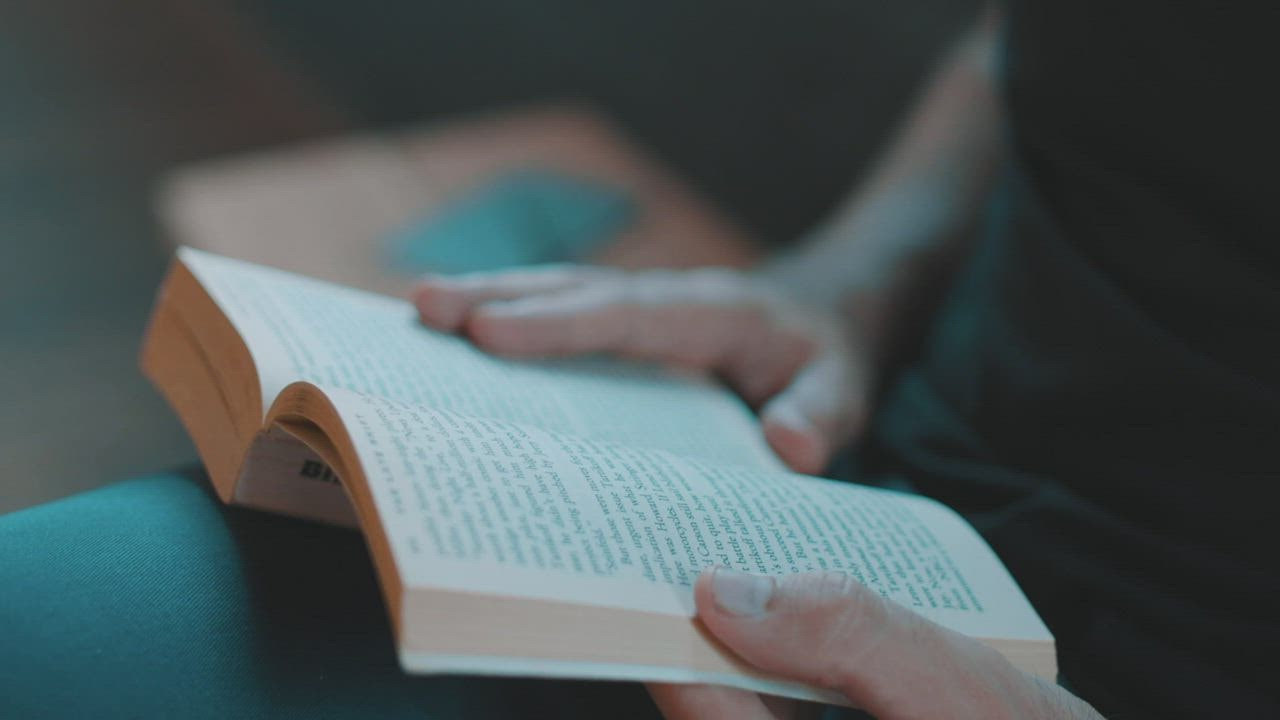
As we enter fall and winter months, have you been thinking about starting or joining a book club? Here are reflections from a book club at my church on books they read on an important topic and how they went about organizing their book club.
Over the past year, a group of Redeemer Lutheran members met to read and discuss books focusing on social justice. One member volunteered to set up the zoom meetings and then summarized the discussion in an email back to the group before the next meeting. The emails deepened their experience and helped them retain important parts of the books. They met weekly and discussed assigned chapters of the books and found this pattern allowed them to discuss the contents more thoroughly.
They are sharing their experiences with the congregation, first by providing a list of the books they read. They are also building a lending library they hope to offer soon.
Here is a list of the books they explored together, with a brief description:
Caste by Isabel Wilkerson: May have been the most influential book our group read in that it challenged us to think about how our entire social structure is an unrecognized caste system.
My Grandmother’s Hands: Racialized Trauma and the Pathway to Mending Our Hearts and Bodies by Resmaa Menakem: Written by a licensed clinical social worker who explores the complex effects of racism and white privilege on all races. Provided many exercises to work through our own reactions to racial trauma.
Devil in the Grove by Gilbert King: The winner of the 2013 Pulitzer Prize for General Nonfiction: A historical account of how Thurgood Marshall (before he became a Supreme Court Justice) and the NAACP brought civil rights cases to courts throughout the country. It highlighted the huge legal challenges that took place to correct injustices, how fragile some of those victories were, and how it could have all gone wrong.
His Truth is Marching On by Jon Meacham: A biography of John Lewis. We were moved by his unwavering bravery and commitment to civil rights, as well as his deep Christian faith.
Between the World and Me by Ta-Nehisi Coates: A moving account of how a young man felt about growing up Black in America, written in the form of a letter to his young son.
Dear Church, a love letter from a Black Preacher to the whitest Denomination in America (ELCA) by Lenny Duncan: A very challenging book which made us consider our own implicit racism and what our responsibility might be to address it in our church and in our neighborhoods.
The Vanishing Half by Brit Bennett: Our only novel. It introduced the subject of colorism and what sacrifices people make to integrate into the dominant society and what it costs to leave your family behind.
I am grateful to the members of my church for sharing their experience. I’ll be picking up a couple of these titles soon.
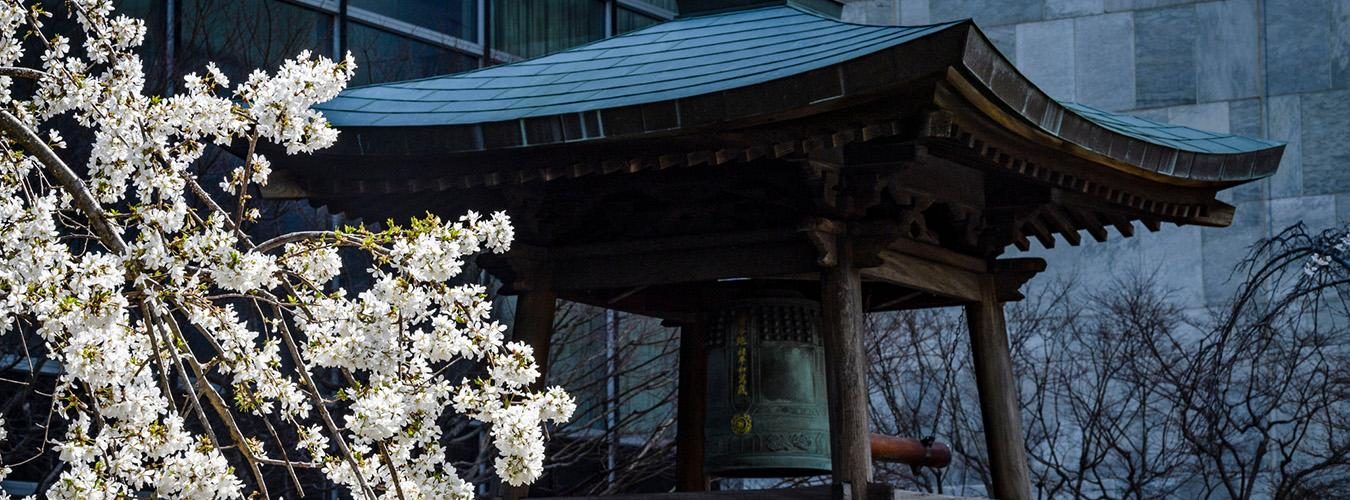
This year marks the 40th anniversary of the United Nations General Assembly declaration “International Day of Peace.” The purpose of the International Day of Peace was and still remains, to strengthen the ideals of peace around the world.
In 2001, September 21st was set as the annual day of commemoration – not only as a time to discuss how to promote and maintain peace among all peoples but most remarkably, as an annual 24-hour period of global ceasefire and non-violence for groups in active combat. https://www.un.org/en/observances/international-day-peace
The International Day of Peace reminds us of our commonalities. Regardless of where we come from or what languages we speak, we are more alike than we are different. Honoring those commonalities makes peace possible. Life is better in a world where peace exists. We draw on the wisdom and experience of the peacemakers and peacekeepers to learn how we can individually and collectively be catalysts for peace – how we can manifest a world that works for everyone, everywhere. Nations and communities around the world struggle with poverty and disease, severely limited access to education and healthcare, particularly in areas where violence is common.
There is something here much bigger than our day-to-day routines. We have the opportunity to transform the world so that our loved ones can live in sustainable peace. To achieve this we are called to step outside our comfort zones. Until we are willing to soften our own perspectives so we can catch a glimpse of someone else’s experience, peace will remain beyond our reach.
Peace is possible. The impact of each small act is immense. Imagine: If we were all simply kind and respectful of one another, how different life would be. We can all contribute to the worldwide culture of peace through generosity of spirit, prayer, advocacy, education and ensuring access to clean water and health resources. Every small effort makes a difference.
Throughout history, dating back to the Peace of God (989 AD) and Truce of God (1027 AD) we see movements that arose from the desire to curb violence by limiting the days and times nobility could practice violence. Most societies have lived in peace most of the time. Today, we are much less likely to die in war than our parents or grandparents. Since the establishment of the United Nations and the creation of the Charter of the United Nations, governments are obligated not to use force against others unless they are acting in self-defense or have been authorized by the UN Security Council to proceed.
Centers for Spiritual Living selected United Nations International Day of Peace in 2016, to conduct a ceremony at the Home Office in Golden, Colorado, to dedicate a Peace Pole and to formally recognize the Collective Meditation for Peace Initiative as an integral and essential element of our organization. The Heart of Peace Initiative coordinates weekly online Collective Peace Meditations and numerous events throughout the year.
At a Centers for Spiritual Living event in 2016, Rev. Dr. Kenn Gordon reminded everyone that every day must be dedicated to peace – that the consciousness of humanity must be uplifted to abiding in and as peace moment by moment. As he said, a Peace Pole is a material replica of the intention that has brought it into form, just as the actions we take demonstrate Spirit’s call to do our part to manifest a world that works for everyone. World peace is a product of what is in the hearts of individuals. To achieve world peace, we must begin with the individual. In order for us to experience and express peace, we must first reveal that peace from within us – to remove all obstacles to the free flow of peace and love.
Religious Science has always been a powerful presence for peace, a core attribute of our philosophy of Oneness. As Dr. Ernest Holmes explained in Spiritual Awareness, “When we become conscious of our existence as an idea in the Mind of God, we shall find that we are walking in pathways of peace; that something within us acts like a magnet to attract that which belongs to itself. This something is Love, the supreme impulsion of the universe.”
Today more than any other time in history, peace relies on the commitment to not only achieve equality, but to secure equity for all persons – to fulfill our vision of a world that works for everyone, everywhere.
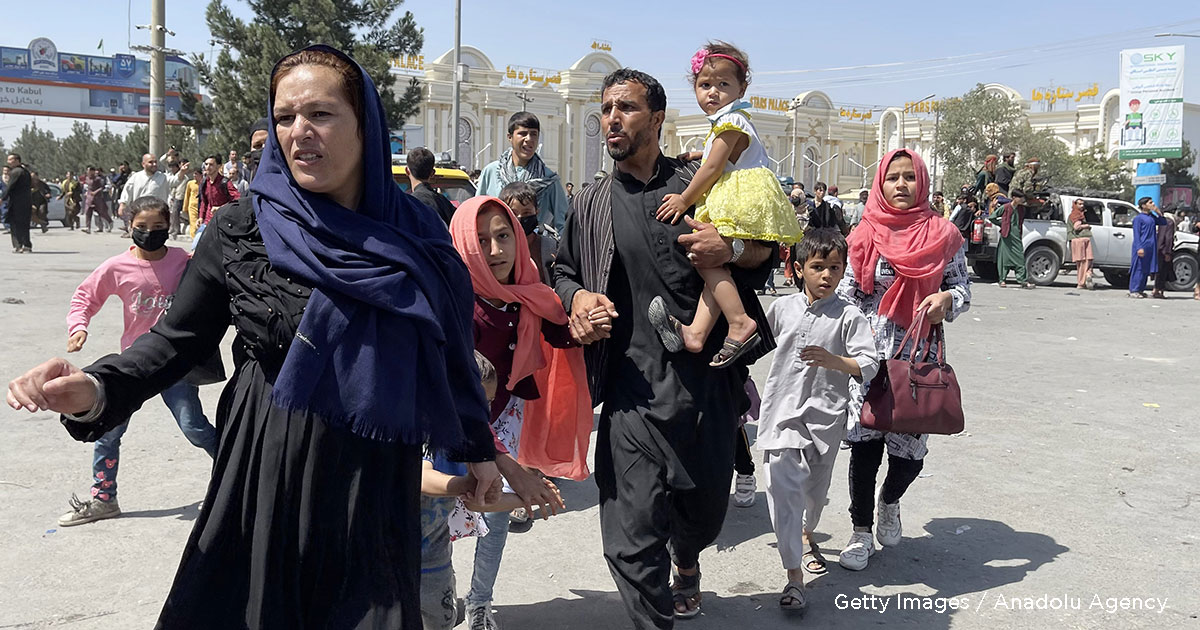
With the desperate situations in Afghanistan and Haiti, many are asking how they can help people in Afghanistan and Afghan refugees, as well as the people of Haiti struggling to recover from the recent devastating earthquake. The following list of resources has been compiled from suggestions offered by Tysons Interfaith contributors:
FOR AFGHANISTAN
LUTHERAN SOCIAL SERVICES: The leading resettlement agency resettling refugees in the DMV area that is already in the process of resettling hundreds of recently arrived Afghan Special Immigrant Visa (SIV) holders, working with local nonprofit groups — they need financial donations, volunteers for apartment setup, transportation, tutoring, advocacy, and more. See https://lssnca.org/take_action/afghan-allies.html
LUTHERAN IMMIGRATION AND REFUGEE SERVICES: See https://www.lirs.org/
CATHOLIC CHARITIES DIOCESE OF ARLINGTON COUNTY: Doing work in the DMV. See https://www.ccda.net/need-help/immigrants-and-refugees/migration-and-refugee-services/
ETHIOPIAN COMMUNITY DEVELOPMENT COMMISSION: Also doing work in the DMV. See https://www.ecdcus.org/
HIAS: formerly known as the Hebrew Immigrant Aid Society, HIAS has been working in the U.S. and around the world for 130 years on refugee resettlement and advocacy — now seeking financial assistance, advocates, and volunteers to provide housing for newly arrived Afghan families. See https://www.hias.org/crisis-afghanistan-how-you-can-help
INTERNATIONAL RESCUE COMMITTEE: another leading refugee resettlement agency, resettling refugees in the Baltimore area and elsewhere in the U.S. and around the world – see https://help.rescue.org/donate/afghanistan
DOCTORS WITHOUT BORDERS: providing medical care for the neediest people in the toughest places around the world, including 5 still-operating projects in Afghanistan – see Afghanistan | How to Help & FAQs | Doctors Without Borders
NO ONE LEFT BEHIND: the only nation-wide association of wartime allies in the US dedicated to ensuring that America keeps its promise to our interpreters from Iraq and Afghanistan, now trying, among other things, to charter planes to rescue Afghan refugees. See https://nooneleft.org/default.aspx?
INTERNATIONAL REFUGEE ASSISTANCE PROGRAM ( IRAP): a leading organization, headquartered in New York, involved in litigation and advocacy on behalf of refugees across the United States. See https://refugeerights.org/
WOMEN FOR WOMEN INTERNATIONAL: https://support.womenforwomen.org/donate/afghanistan-emergency-2x-match?src=HHUA21082A
CHURCH WORLD SERVICE: another leading refugee resettlement agency, run by U.S. churches for over 70 years, involved in advocacy as well as refugee resettlement around the world. See https://cwsglobal.org/learn/refugees-and-immigrants/
FOR HAITI
Many faith-based organizations are sending resources to Haiti, so you may wish to check with your local faith-based organization for additional information.
Also, the following NPR article explains precautions to take when donating and provides links to lists of organizations doing work in Haiti. https://www.npr.org/2021/08/17/1028421310/haiti-earthquake-how-to-help.
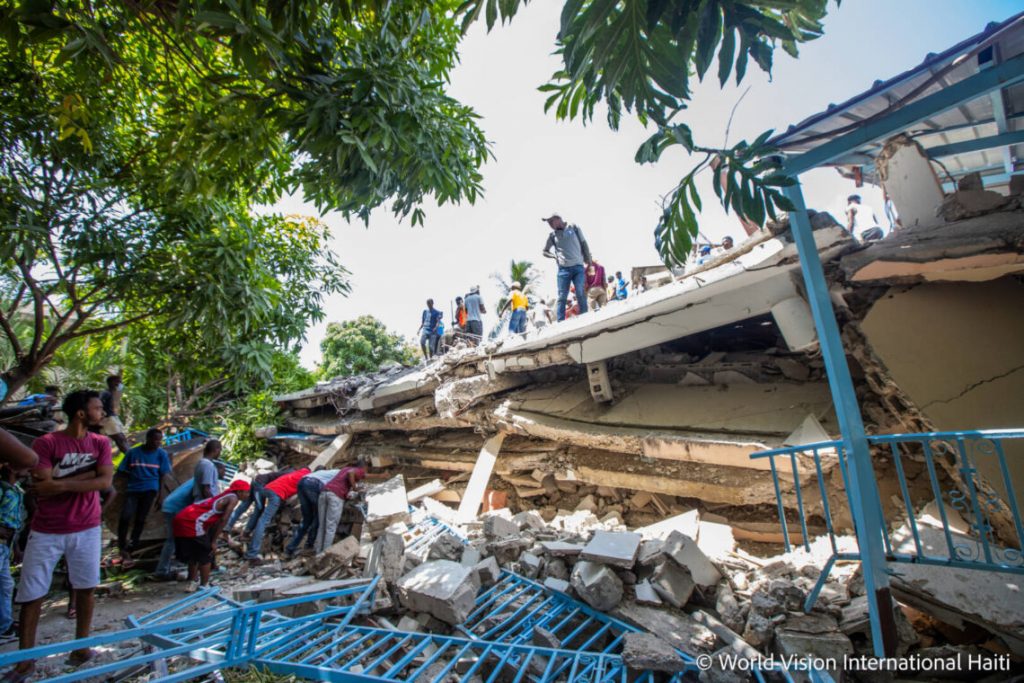
This blog post is the expressed opinion of its writer and does not necessarily reflect the views of Tysons Interfaith or its members.
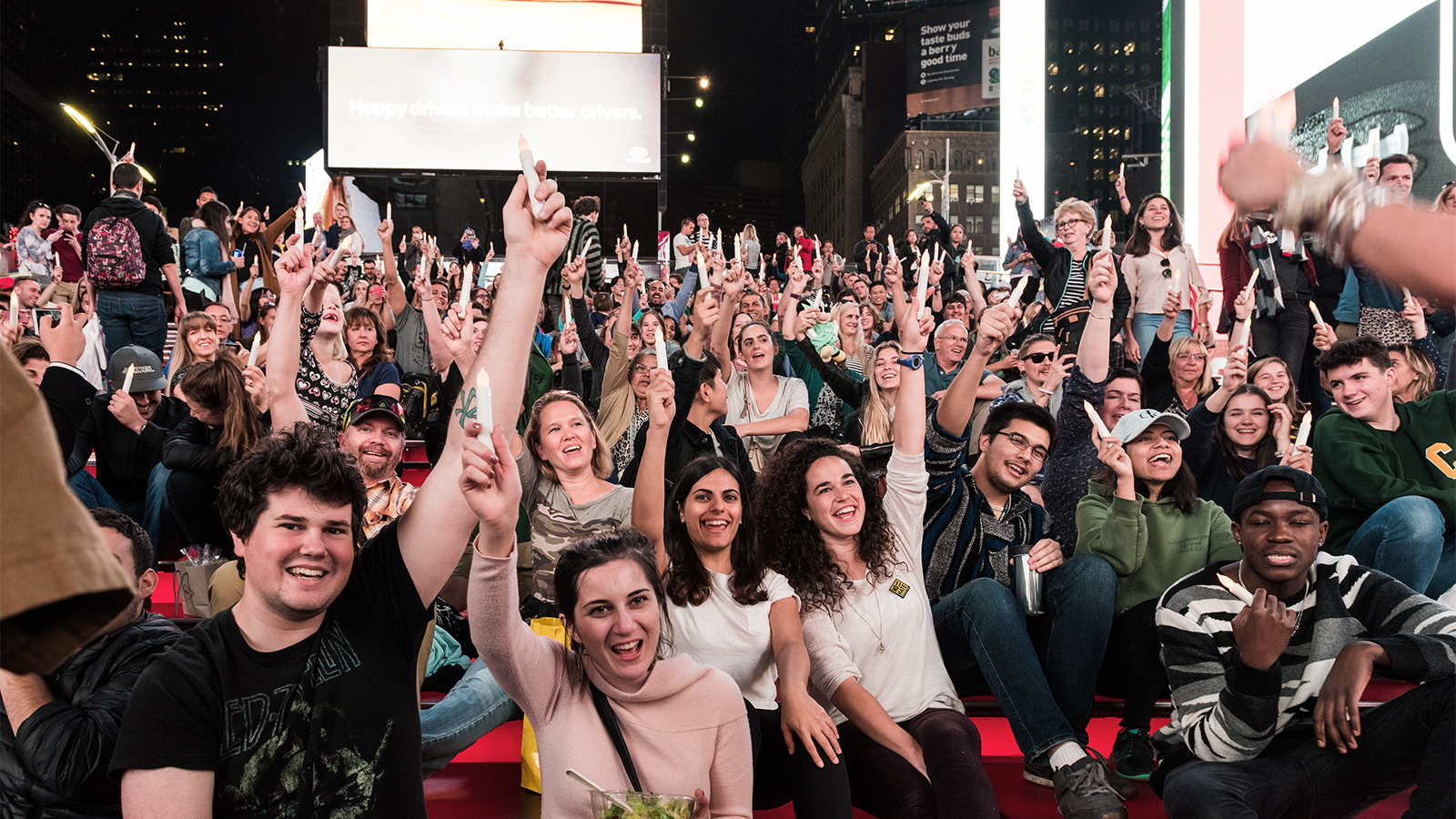
A recent survey of religion in America provides some granularity when it comes to the so-called decline in religiosity in these United States. Survey: White Mainline Protestants Outnumber White Evangelicals
The data show that contrary to other research, the percentage of Americans identifying with formal denominations is on a rebound from a low in 2018. Is this good news? Well, there’s a lot to be said for maintaining a skeptical attitude about formal religion. And yet, at the same time, this modest (re)turning to organized religion may be a response to the spiritual void that “mass society” represents.
Philosopher, and deeply agnostic, Hannah Arendt, summed up “mass society” thus:
All of the features, however, that mass psychology has by now identified as typical of man in mass society: his abandonment (Verlassenheit—and this abandonment is neither isolation nor solitude), along with his utmost adaptability; his irritability and lack of support; his extraordinary capacity for consumption (if not gluttony), along with his utter inability to judge qualities or even to discern them; but most of all his egocentrism and the fatal alienation from the world that he mistakes for self-alienation (this, too, dates back to Rousseau)—all of this first manifested itself in “good society,” which does not have a mass character. The first people of the new mass society, one might say, constituted a mass to such a small degree (in a quantitative sense) that they were actually able to consider themselves an elite.
One could argue that, with a few exceptions in Northern Europe, Americans represent the elites of the world. We are enmeshed in the ills outlined in this dense paragraph from Arendt’s critique of mass society, and it is natural to crave for some sort of spiritual solace. Most of us in Tysons Interfaith would probably quibble with the word “solace,” because that seems like a psychological cop out. Our faith traditions emphasize the Platonic world view that ideals, like good and evil, are real.
I believe that the beauty of religious worship is its communality. Megachurches excepted, most worship takes place in an intimate setting where loving relationships can be forged between individuals of different backgrounds and tendencies. This is what I experience in my faith community and with my participation in Tysons Interfaith. If you want to read about communality in action, I recommend to you the life of Gordon Crosby, who bucked the trend of bigness and put social responsibility front and center in his theology. Rebel pastor Gordon Cosby left lasting mark on mainstream Christianity – The Washington Post.
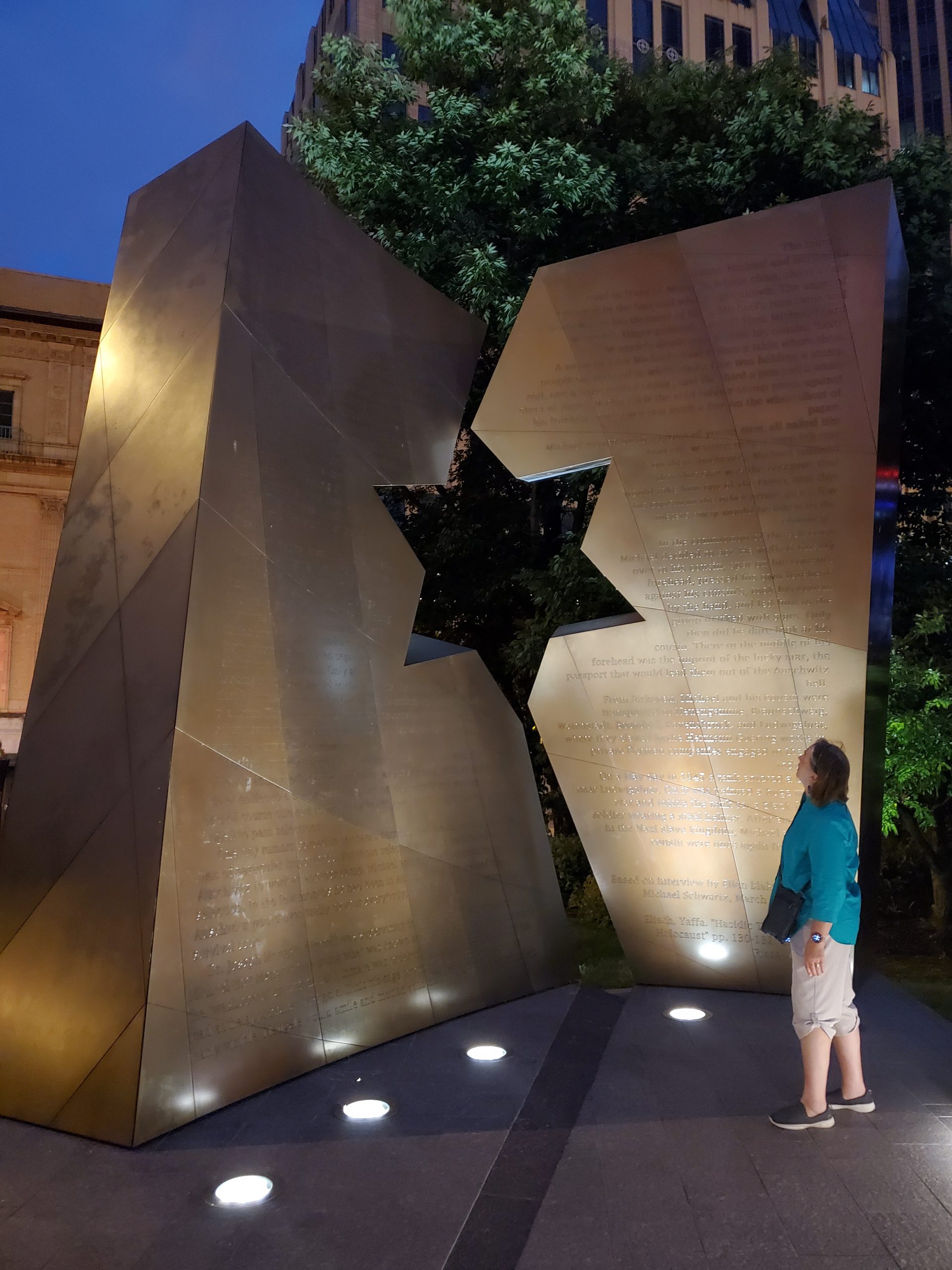
On a recent road trip to the west, we stopped in Columbus, Ohio. Among other things, we saw the Ohio Capitol building, which was beautiful and distinctive, especially at night. [Interesting fact – You might think they didn’t finish the dome, but the horizontal top was on purpose, to reflect the Greek Revival style to honor the Greek concept of democracy, whereas domes are more Roman style.]
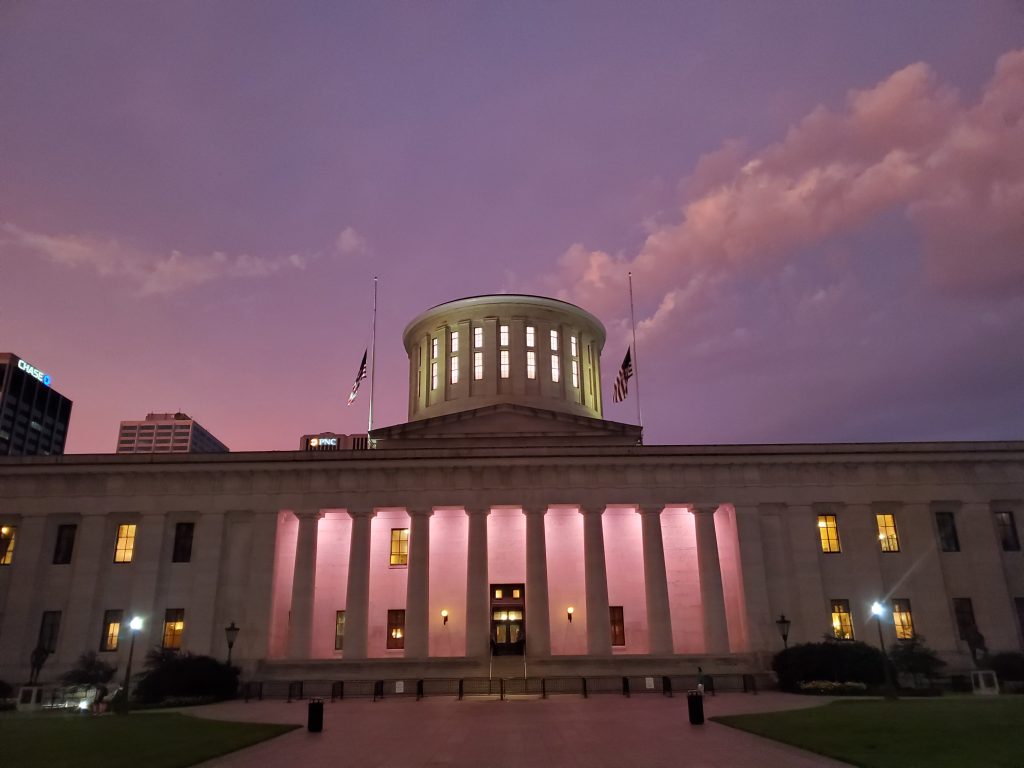
One thing we didn’t expect was a Holocaust and Liberators Memorial on the Capitol grounds. Apparently during a Holocaust remembrance ceremony several years ago, the governor was so moved he said the state needed a more formal Holocaust Memorial, so one was commissioned. It is solemn and powerful, as you can see from the pictures (we thought particularly moving at night).

The memorial speaks for itself, but we were particularly inspired by the timeless quotes on the marble wall leading to the monument:
“If you save one life, it is as if you saved the world.”
“Every human being who chooses to remember this chapter in history and to infuse it with meaning is thereby choosing to struggle for the preservation of the bedrock moral values that alone make possible the existence of well-ordered society. This is a commitment to uphold human rights, above all, freedom and the sanctity of life, and the opportunity for people to live side by side in harmony.”
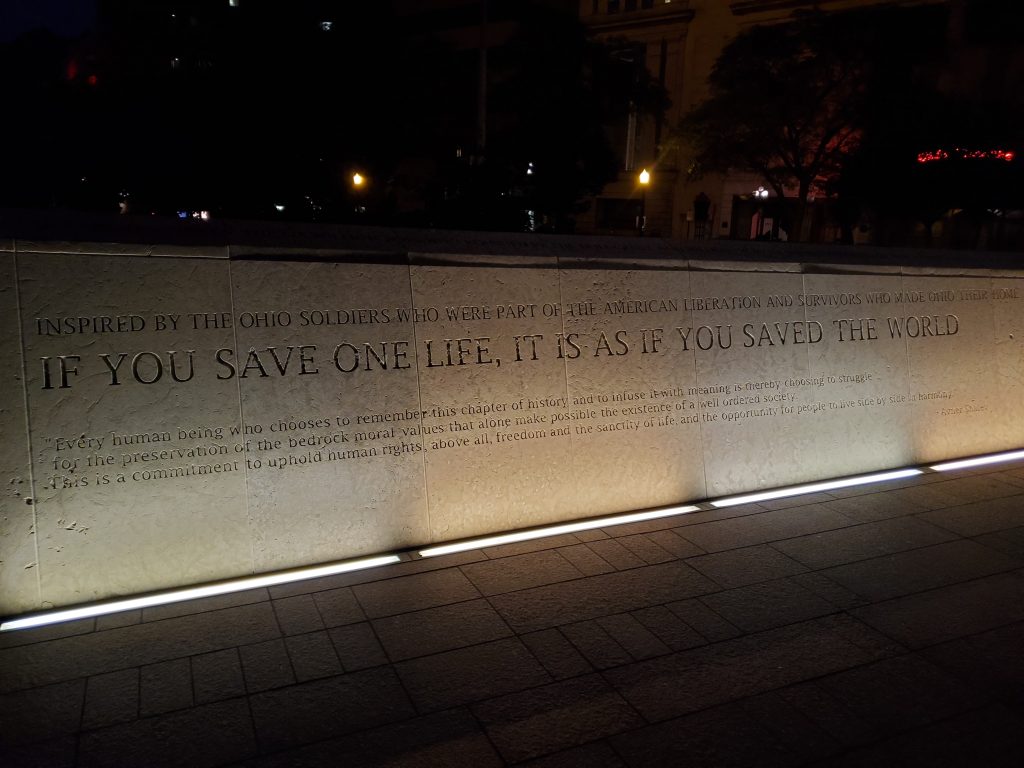
For more information on the memorial, see, http://www.ohiostatehouse.org/about/capitol-square/statues-and-monuments/ohio-holocaust-and-liberators-memorial. We particularly recommend the story of Michael Schwartz which is inscribed on the main part of the memorial.”
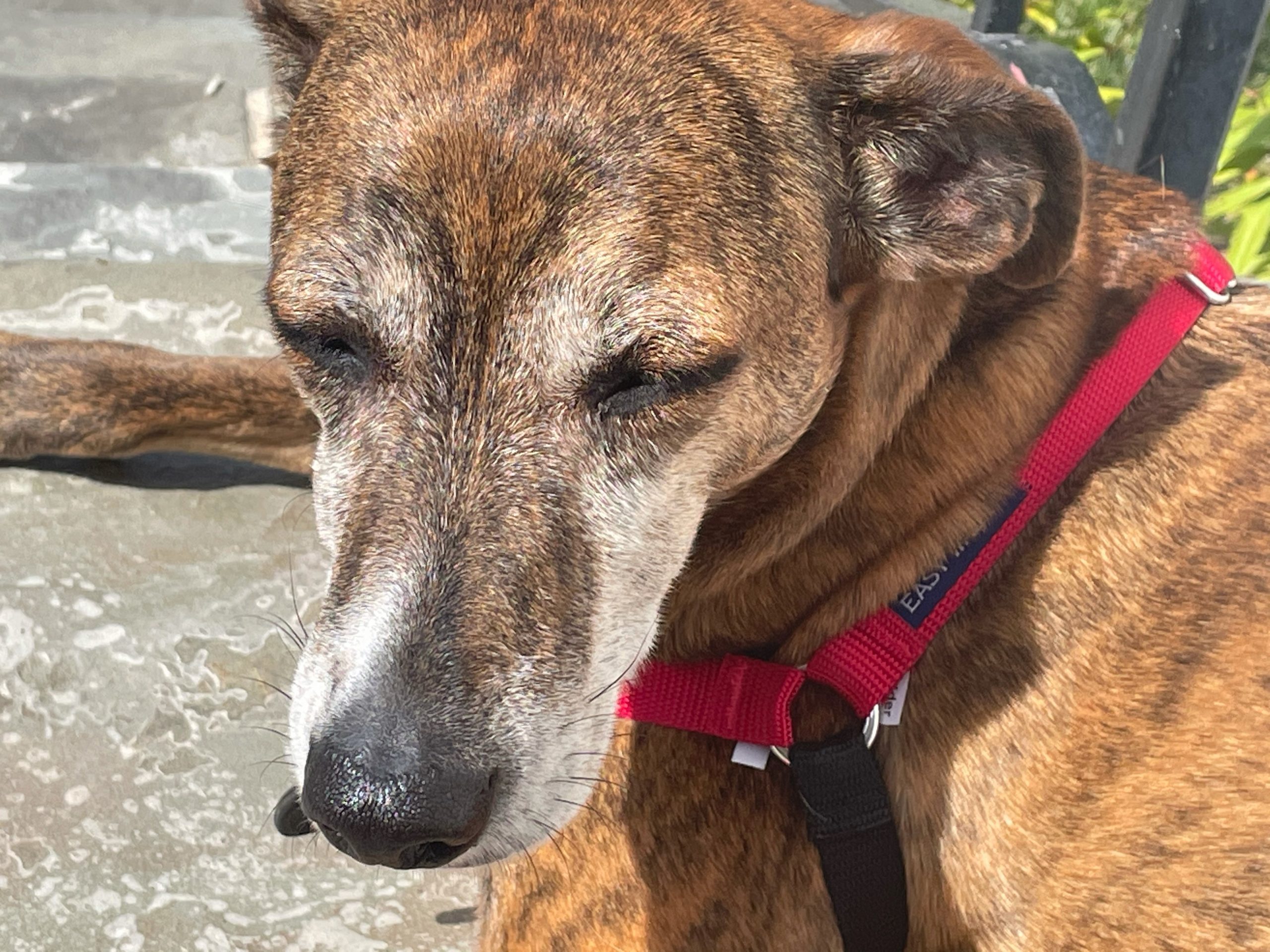
“The zealously nurtured attitude of literal credulity towards the oriental treasure of thought is in this case a lesser danger, as in Zen there are fortunately none of those marvelously incomprehensible words, as in Indian cults. Neither does Zen play about with complicated Hatha-yoga techniques, which delude the physiologically thinking European with the false hope that the spirit can be obtained by sitting and by breathing. On the contrary, Zen demands intelligence and will-power, as do all the greater things which desire to become real.”
Thus, no less a thinker than Carl Jung ends his foreword to D.T. Suzuki’s essays on Zen, first published in Japan during the “1914 War.” The eminent psychologist takes more than twenty pages to dance around an explanation of what the Japanese call Satori, translated imperfectly as “enlightenment” in most “Western” treatises. If he can’t do it, with all the usual qualifications, then how can a hopelessly European male living on the outskirts of Tysons do so in the 21st century?
Well, let’s start with a classic Wu- or Mu-anecdote about the dog. A monk once asked: “Has a dog Buddhist nature, too?” The Master answered: “Wu,” which Jung explains is “obviously just what the dog himself [in my case, herself] would have said in answer to the question.” It usually comes out as “woof.”
Without “making any recommendation or offering any advice,” Jung says that when Westerners begin to talk about Zen, he considers it his “duty to show the European where our entrance lies to that ‘longest of all roads’ which leads to satori, and what difficulties strew that path, which has only been trodden by only a few of our great men [sic]—perhaps as a beacon on a high mountain shining out in the hazy future.” It “can neither be captured in with skillful formulae nor exorcized by means of scientific dogmas, for there is something of Destiny clinging to it—yes it is sometimes Destiny itself, as Faust and Zarathustra show all too clearly.” Well, it’s not so clear to me since I don’t really understand German.
He goes on to warn that these two great works “are only on the border-line of what is comprehensible to the European” and “one can scarcely expect a cultured public who have only just begun to hear about the dim world of the soul to be able to form any adequate conception of the spiritual state of a man [sic] who has fallen into the confusions of the individuation process, by which term I have designated the ‘becoming whole’ (Ganzewerdung).”“Preoccupation with the riddles of Zen may perhaps stiffen the spine of the faint-hearted European, or provide a pair of spectacles for his short-sightedness, so that from his ‘gloomy hole in the wall,’ he may enjoy at least a glimpse of the world of spiritual experience, which until now has been shrouded in mist.”
Well, I can tell you that early in the morning on the Jones Branch Extender by the Capital One building, there are indeed mists to contemplate. And there are plenty of dogs being walked about by happy denizens all around Tysons. So, woof. Or should I say, “Wu”….?
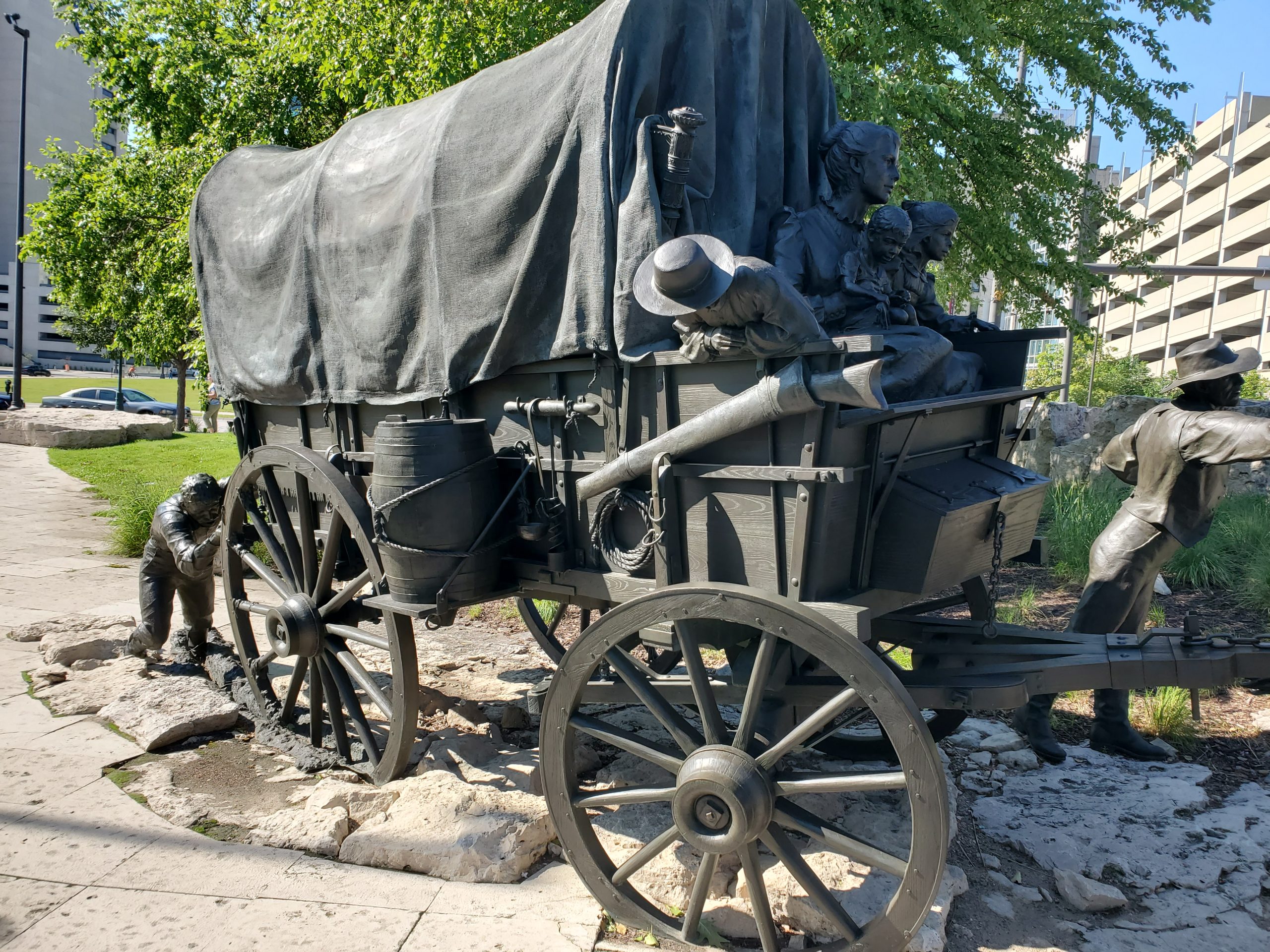
Every July 24, the State of Utah celebrates Pioneer Day, a major state holiday. Pioneer Day commemorates July 24, 1847, when an early contingent of Mormon pioneers, led by Brigham Young, entered what is now the Salt Lake Valley. They had made a long trek to find a place of refuge from religious persecution. The holiday is marked in many Utah cities and towns by a parade with pioneer-themed floats.
On a recent road trip through the West, we saw some key points along the trail that led to the settlement in Utah. The first was Winter Quarters (current day Omaha), the embarkation point where the Mormon pioneers spent two winters preparing for the trek west. Downtown Omaha has an extensive monument to the Mormon and other pioneers that went west in wagons, on horses, or on foot pulling handcarts. There is also a cemetery where 600 of the 4,000 Mormon pioneers who spent those difficult winters are buried – they didn’t make it west. Overlooking the cemetery is a powerful bronze sculpture commemorating the sacrifices and faith of those pioneers – by sculptor Avard Fairbanks, who coincidentally sculpted the busts of George Washington that frame the campus of George Washington University. The sculpture is placed directly over the graves of an unknown child and seven other pioneers.
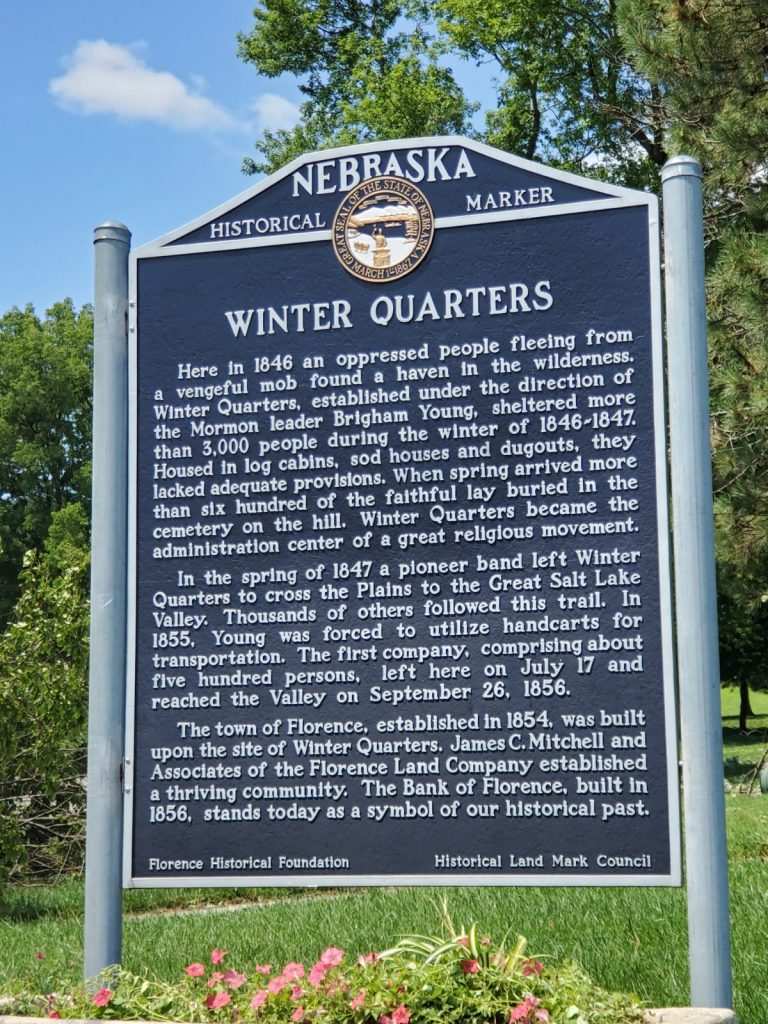
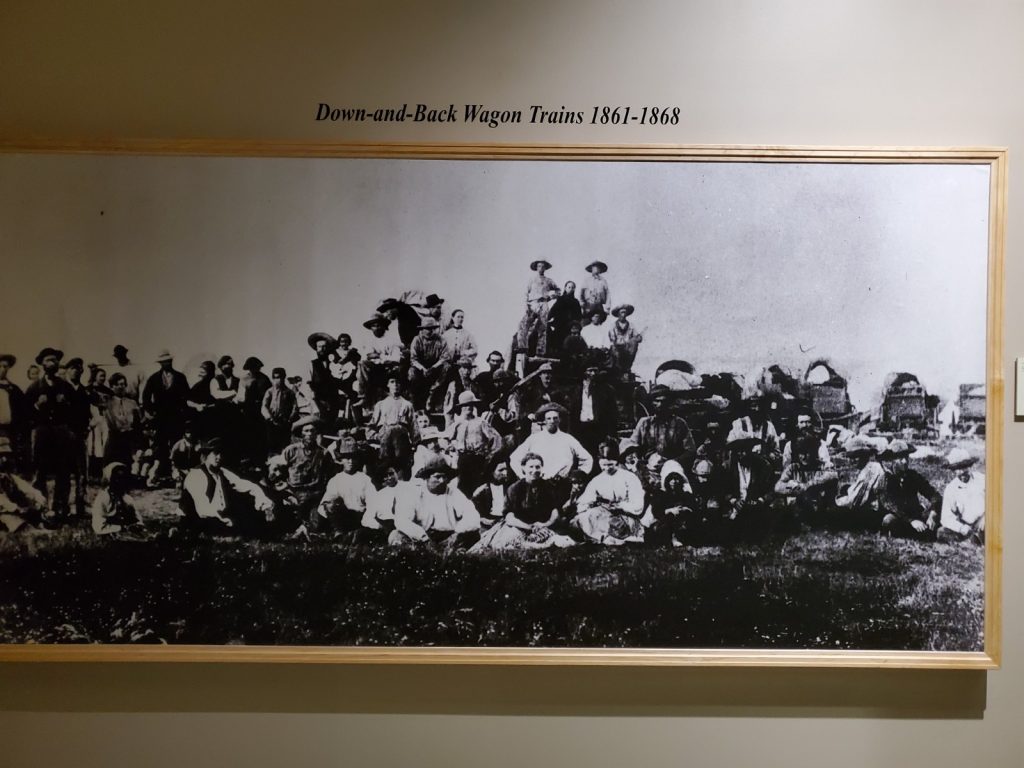
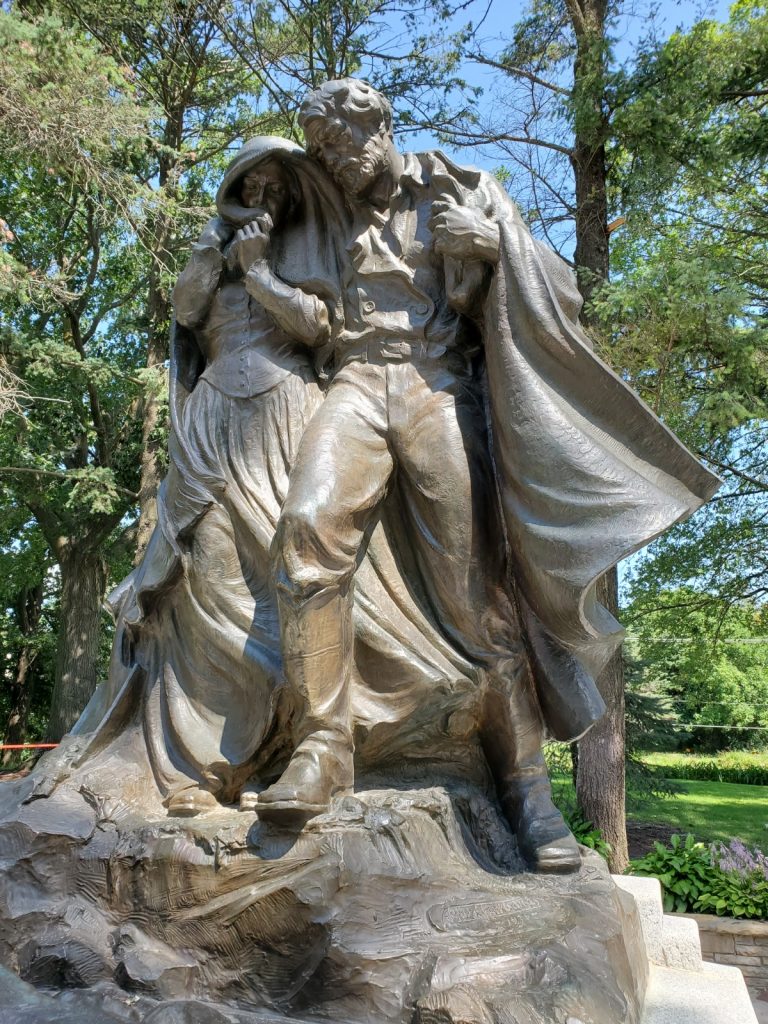
About 450 miles to the west is Chimney Rock in the North Platte River Valley. Not only is it the most recognizable landmark on the Mormon Trail (and the Oregon Trail that parallels it) because of its unique shape, it also marks the end of the flat part of the trail and the beginning of the mountainous terrain that culminates in the Rocky Mountains. Near Chimney Rock is a grave marker for Rebecca Winters, a mother of 4 who died from cholera along the trail. It was very moving to see that a family friend had taken the effort to carve her name in an old wagon wheel to memorialize her sacrifice and her importance as an individual. Her descendants later added a more traditional grave marker.


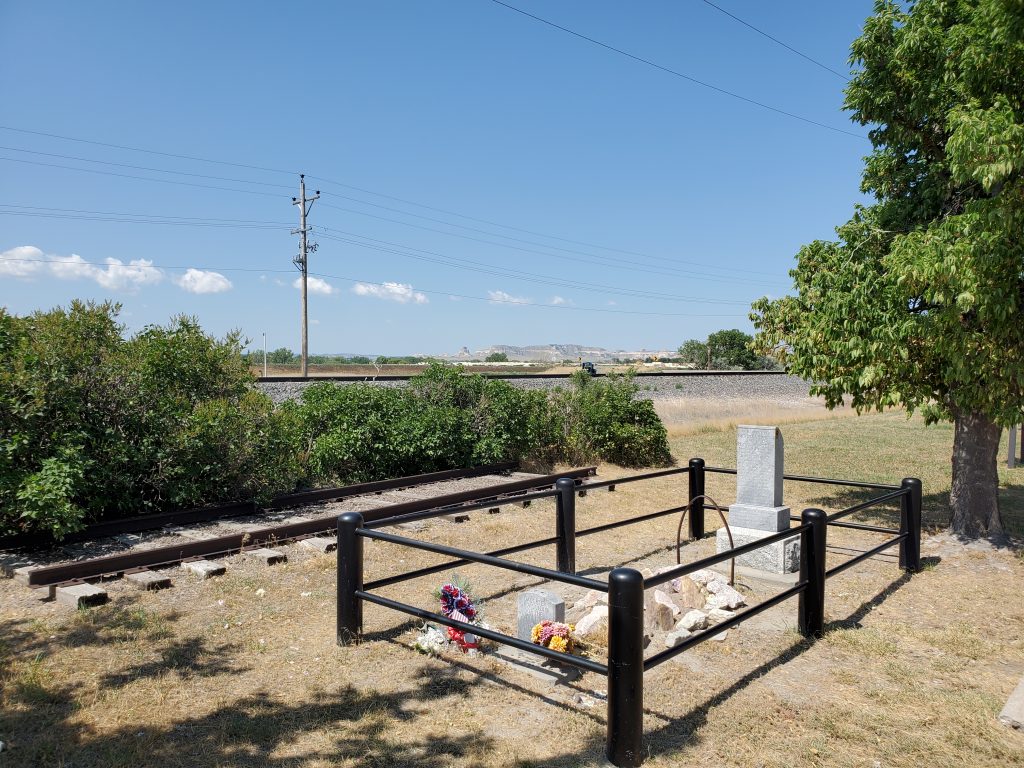
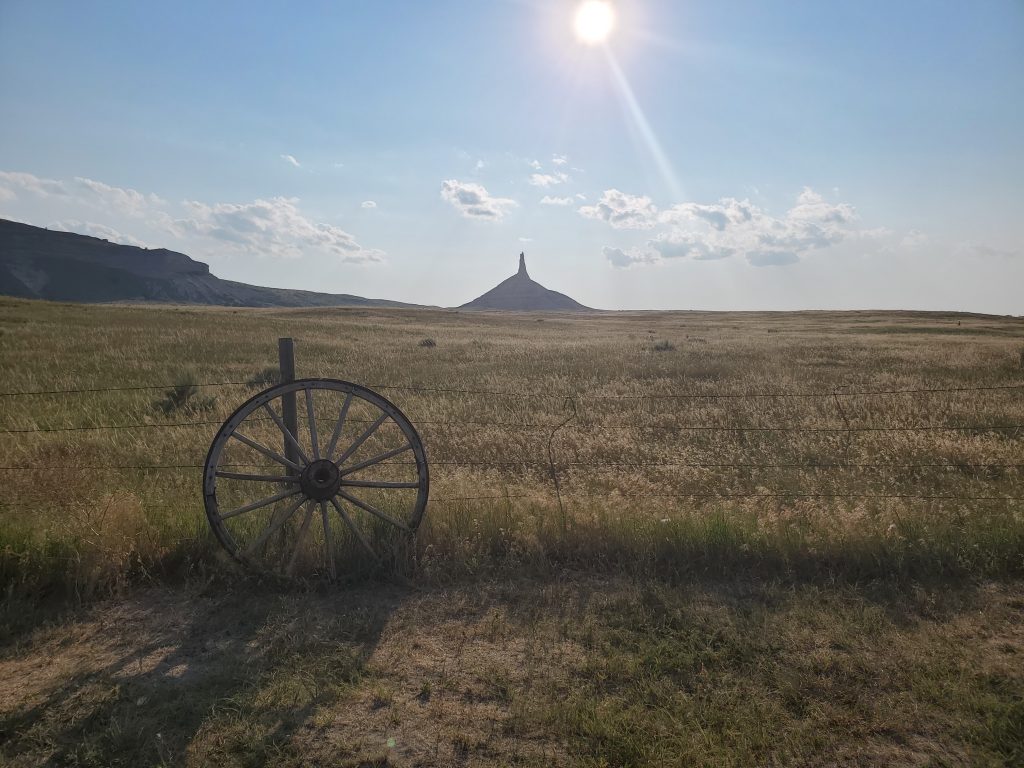
The Mormon Trail is sacred ground for members of our church, the Church of Jesus Christ of Latter-day Saints. Both of us have ancestors who were among the 70,000 that went west, through great hardship, to find a place of peace to live and worship. What motivated these pioneers to make this dangerous trek? As one of our church leaders summarized a few years ago:
“The foremost quality of our pioneers was faith. With faith in God, they did what every pioneer does – they stepped forward into the unknown: a new religion, a new land, a new way of doing things . . . Two companion qualities evident in the lives of our pioneers, early and modern are unselfishness and sacrifice.”
This blog post is the expressed opinion of its writer and does not necessarily reflect the views of Tysons Interfaith or its members.

There is lots of summer left, and with it — opportunities to get out on a summer’s evening and enjoy free music in and around Tysons! Thursday evenings are particularly hopping, with a number of concert series offerings:
- The Boro Summer Live Music Series featuring local artists runs Thursday evenings through September 9 from 5:30 pm to 8:00 pm on the Upper Promenade near Boro Park in Tysons (8350 Broad Street, Tysons). Information about this series and other happenings at the Boro can be found here.
- Tysons Corner Center presents The Plaza Live! through October on Thursdays from 4:00 pm to 7:00 pm and on Saturdays from 2:00 pm to 7:00 pm on the Plaza at Tysons Corner Mall. Additional information can be found here.
- The Nottoway Nights Concert Series are held on Thursday evenings in July and August at 7:30 pm at Nottoway Park (9537 Courthouse Road, Vienna). Bring a blanket or lawn chairs. Additional information and a list of performers can be found here.
- The City of Falls Church is again presenting its Concerts in the Park at Cherry Hill Park, 312 Park Avenue, Falls Church on Thursday evenings from 7:00 pm – 9:00 pm. Blankets or lawn chairs suggested. Additional information can be found here.
And while not free, there is something going on almost every night of the week at nearby Wolf Trap, where you can reserve a seat or bring a blanket and a picnic dinner. Their calendar can be found here.
